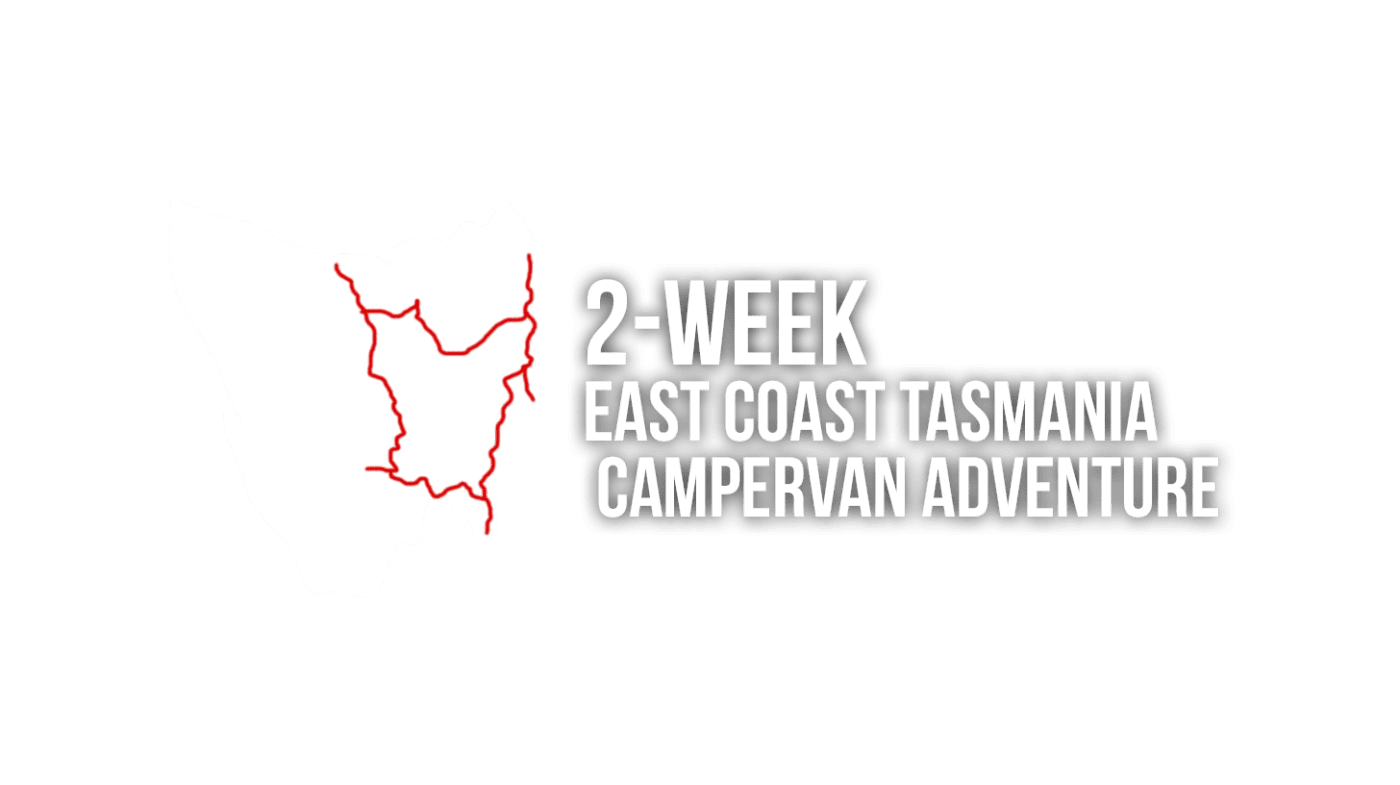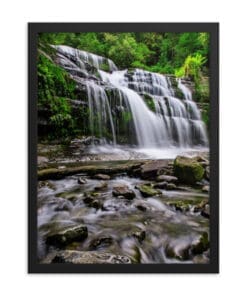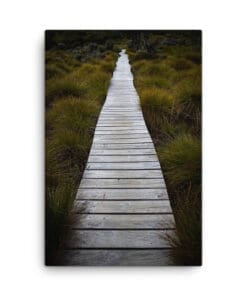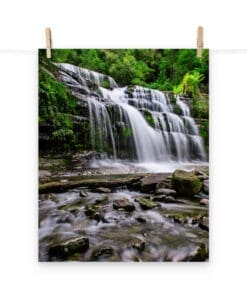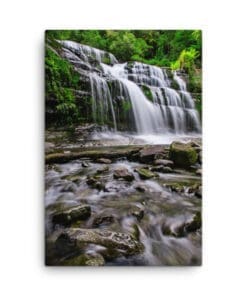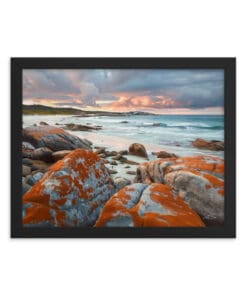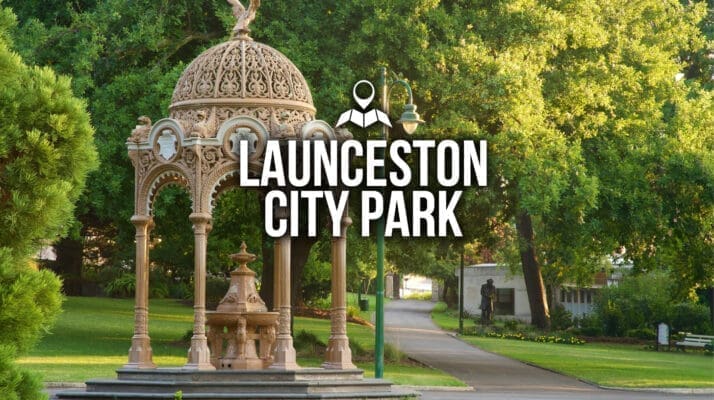Coastal Bliss and Bushland Wonders:
A Two-Week East Coast Tasmania Campervan Adventure
Imagine waking up to the symphony of wild Tasmanian birds, opening the door of your campervan to behold the first light illuminating the azure Tasman Sea, and spending your days exploring the unparalleled natural beauty and rich history of Australia’s island state.
Welcome to our comprehensive guide for a two-week East Coast Tasmania campervan adventure! Starting from Devonport, we journey through a world of stunning coastal landscapes, fascinating wildlife, World Heritage-listed convict sites, and charming seaside towns.
Buckle up as we hit the road, allowing Tasmania’s east coast to unravel its treasures day by day, all from the comfort of your 2WD camper van. Get ready to create unforgettable memories, because this Tasmanian adventure is sure to leave you spellbound!
Week 1:
Day 1-2: Devonport to Launceston
- Arrive in Devonport and get settled in your campervan.
- Drive to Launceston. Visit the Cataract Gorge Reserve, and take a leisurely stroll around the city’s preserved colonial architecture.
- Stay overnight at the Caravan Park.
Day 3-4: Launceston to St. Helens
- Head to St. Helens. Along the way, stop by at the Bridestowe Lavender Estate, especially beautiful in summer.
- In St. Helens, visit the Bay of Fires, renowned for its stunning orange lichen-covered granite boulders.
- Free camp overnight at Swimcart Beach.
Day 5-6: St. Helens to Freycinet National Park
- Drive south to Freycinet National Park.
- Hike to Wineglass Bay lookout, and if energy permits, head down to the beach. Visit Honeymoon Bay and Sleepy Bay.
- Camp at Iluka Campground in Coles Bay.
Day 7: Freycinet National Park to Swansea
- Travel to Swansea, visit the local heritage centre and enjoy the beautiful beaches.
- Overnight at the Swansea Holiday Park.
Week 2:
Day 8-9: Swansea to Port Arthur
- Make your way south to Port Arthur, stopping at Triabunna for lunch.
- Spend a day exploring the UNESCO World Heritage-listed Port Arthur Historic Site.
- Stay at the Port Arthur Holiday Park.
Day 10-11: Port Arthur to Hobart
- Drive to Hobart. Visit Salamanca Market (if it’s Saturday), and explore the historic waterfront.
- Don’t miss the Museum of Old and New Art (MONA).
- Overnight stay at the Hobart Showgrounds.
Day 12-13: Hobart to Mount Field National Park
- Drive to Mount Field National Park. Explore Russell Falls and the Tall Trees Track.
- Stay overnight at Mount Field National Park Campground.
Day 14: Mount Field National Park to Devonport
- Make your way back to Devonport, ending your adventure-filled two-week road trip.
This itinerary offers a taste of Tasmania’s East Coast, from the stunning coastal landscapes of Freycinet National Park and Bay of Fires to the cultural richness of Launceston and Hobart, all while incorporating as many free camps and popular attractions as possible.
Week 1: Devonport to Swansea – Embarking on a Tasmanian Odyssey
Day 1-2: Devonport to Launceston – Welcoming Tasmania’s Charms
Stepping off the Spirit of Tasmania in Devonport, you’ll embark on a remarkable journey through Tasmania’s stunning landscapes. The first leg takes you to Launceston, Tasmania’s second-largest city and a vibrant cultural hub. Before leaving Devonport, spend a few hours exploring the city, maybe even take a brief stroll around the Mersey Bluff Lighthouse.
As you begin your journey towards Launceston, the landscape transforms into a picturesque blend of farmland and low-lying hills. Upon reaching Launceston, Cataract Gorge Reserve is a must-visit. Here, you can take the world’s longest single-span chairlift for an overview of the magnificent gorge or traverse the various walking trails. The lush green basin is home to peacocks and wallabies, while the South Esk River adds an enchanting allure.
Launceston’s well-preserved colonial and Victorian architecture offers a fascinating glimpse into the city’s past. Stroll around and soak in the historic ambiance, then retreat for a peaceful night at the Treasure Island Caravan Park.
Day 3-4: Launceston to St. Helens – Tracing Tasmania’s Natural Grandeur
Depart Launceston for St. Helens, the game fishing capital of Tasmania, located on George’s Bay. As you head east, consider stopping at Bridestowe Lavender Estate. If you visit during summer, you’ll be greeted by a breathtaking purple sea of flowering lavender.
Upon reaching St. Helens, the Bay of Fires undoubtedly warrants your attention. The bay’s white sandy beaches, clear blue waters, and orange-hued granite rocks create a captivating sight. Named for the Aboriginal fires spotted by early European explorers, the bay offers ample opportunities for beach walks, bird watching, fishing, and surfing.
Nearby, St. Helens Point is an excellent spot for those eager to cast a line. The area is known for its Australian salmon and rock lobster. As the day ends, Swimcart Beach presents an ideal free camping location. As you fall asleep to the sound of lapping waves, it’s clear you’re embarking on the adventure of a lifetime.
Day 5-6: St. Helens to Freycinet National Park – Immersed in Tasmania’s Pristine Wilderness
Next, the journey turns south to Freycinet National Park, a gem of Tasmania’s East Coast. A peninsula of pink granite mountains interspersed with azure bays and white sandy beaches, Freycinet is a testament to Tasmania’s pristine wilderness.
Hiking to the Wineglass Bay lookout offers a rewarding view of the curved bay, often listed among the world’s most beautiful beaches. If you’re up for it, descend to the beach itself, a slightly challenging but worthwhile trek.
Also, explore Honeymoon Bay and Sleepy Bay, both perfect for a relaxing dip. Nearby, the Cape Tourville Lighthouse offers panoramic views of the park and the Tasman Sea.
For the night, Iluka Campground in Coles Bay makes a convenient base, equipped with basic facilities and nestled within a captivating setting.
Day 7: Freycinet National Park to Swansea – Seaside Tranquillity
The final leg of the first week leads to Swansea, a charming seaside town. The town’s Heritage Centre offers insights into Swansea’s history. For wine enthusiasts, a visit to the local vineyards, known for their excellent cool-climate wines, is highly recommended.
Relax and reflect on your week’s journey on Swansea’s beautiful beaches. As you retire for the night at the Swansea Holiday Park, the memories of the places you’ve explored in just the first week promise even more adventure in the week ahead. Tasmania’s east coast is just beginning to reveal its treasures, and there’s plenty more to explore!
Week 2: Swansea to Devonport – Concluding an Unforgettable Tasmanian Journey
Day 8-9: Swansea to Port Arthur – Remnants of the Past
Commence the second week of your journey by heading south from Swansea towards Port Arthur. Make a pit stop at Triabunna, a charming fishing town known for its fresh seafood, before continuing to Tasmania’s historical heart.
Port Arthur is a UNESCO World Heritage-listed site, once home to a harsh penal settlement. Today, it stands as a poignant monument to Australia’s convict history. Spend a day exploring the well-preserved buildings, the eerie solitary confinement cells, and the ruins of the convict church. Don’t miss the boat tour around the harbour, included in your entry ticket, and the Isle of the Dead, a cemetery that narrates stories of the settlement’s inhabitants.
Spend the night at the Port Arthur Holiday Park. Their comfortable amenities will provide a pleasant contrast to the historic hardships witnessed earlier in the day.
Day 10-11: Port Arthur to Hobart – A Fusion of History, Art, and Culture
From Port Arthur, a scenic drive along the Tasman Peninsula brings you to Tasmania’s capital, Hobart. Nestled between Mount Wellington and the Derwent River, Hobart boasts a harmonious blend of natural beauty, history, and vibrant modern culture.
Saturday visitors shouldn’t miss the Salamanca Market, a lively street market teeming with local produce, arts, crafts, and delicious food. Regardless of the day, the historic Salamanca Place, with its sandstone buildings now housing galleries, theatres, and restaurants, is worth exploring.
Next, head to the Hobart waterfront, once the hub of Hobart’s whaling and apple industries. Today, it’s the city’s social centre, lined with restaurants, cafes, and the bustling fish market. While here, sample Tasmania’s renowned seafood – oysters, scallops, salmon – freshly caught from the surrounding clean waters.
No visit to Hobart is complete without a trip to MONA, the Museum of Old and New Art. Accessible by a high-speed ferry from the city centre, MONA houses a unique and sometimes controversial collection of modern art and antiquities. Its subterranean architecture and thought-provoking exhibits offer an immersive art experience.
The Hobart Showgrounds is a convenient spot to set up camp for the night, with easy access to city attractions.
Day 12-13: Hobart to Mount Field National Park – Encountering Tasmania’s Wilderness
Venture inland from Hobart to Mount Field National Park, one of Tasmania’s oldest and most diverse national parks. The park’s rainforest, alpine moorlands, and tall swamp gum forests are home to a rich variety of flora and fauna, including the Tasmanian devil and platypus.
Start with the Russell Falls, an easy walk from the visitor centre. Its three elegant tiers, particularly stunning after rainfall, make it one of Tasmania’s most adored waterfalls. The Tall Trees Track takes you among some of the world’s tallest trees, the swamp gums, reaching up to 80 metres high. If time and energy permit, the Lake Dobson area, a longer drive up a winding road, offers higher altitude walks and spectacular views.
For overnight camping, Mount Field National Park Campground offers basic facilities amidst a tranquil natural setting.
Day 14: Mount Field National Park to Devonport – Homeward Bound
With a heart full of memories and a camera full of breathtaking photos, it’s time to make your way back to Devonport. Enjoy the scenic beauty of Tasmania one last time as you drive north. You may choose to make a brief stop at Sheffield, known as the ‘Town of Murals’, adorned with over 140 murals depicting its history.
Arriving back in Devonport, it’s time to return your camper van and bid goodbye to Tasmania’s rugged landscapes, stunning coastlines, rich history, and welcoming towns. As the Spirit of Tasmania ferries you back across the Bass Strait, begin planning your next Tasmanian adventure, because this enchanting island is sure to lure you back for more.


